
Wilbur Addison Smith was a Northern Rhodesian-born British-South African novelist specializing in historical fiction about international involvement in Southern Africa across four centuries.

Shout at the Devil is a 1976 British war adventure film directed by Peter R. Hunt and starring Lee Marvin and Roger Moore. The film, set in Zanzibar and German East Africa in 1913–1914, is based on a novel by Wilbur Smith which is very loosely inspired by real events. The supporting cast features Barbara Parkins and Ian Holm.
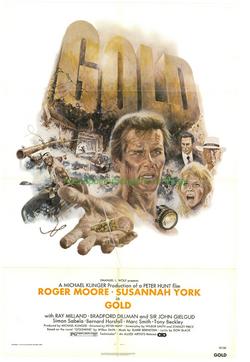
Gold is a 1974 British thriller film starring Roger Moore and Susannah York and directed by Peter R. Hunt. It was based on the 1970 novel Gold Mine by Wilbur Smith. Moore plays Rodney "Rod" Slater, general manager of a South African gold mine, who is instructed by his boss Steyner to break through an underground dike into what he is told is a rich seam of gold. Meanwhile, he falls in love with Steyner's wife Terry, played by York. In the United States, the film was released only as part of a double bill with The Taking of Pelham One Two Three.

Shalako is a 1968 Western film directed by Edward Dmytryk and starring Sean Connery and Brigitte Bardot. It was shot at Shepperton Studios near London with sets designed by the art director Herbert Smith. Location shooting took place in Almería in southern Spain, particularly in the Tabernas Desert which was frequently used in European westerns during the decade.

Dark of the Sun is a 1968 British adventure war film starring Rod Taylor, Yvette Mimieux, Jim Brown, and Peter Carsten. The film, which was directed by Jack Cardiff, is based on Wilbur Smith's 1965 novel, The Dark of the Sun. The story about a band of mercenaries sent on a dangerous mission during the Congo Crisis was adapted into a screenplay by Ranald MacDougall. Critics condemned the film on its original release for its graphic scenes of violence and torture.

When the Lion Feeds (1964) is the debut novel of Rhodesian writer Wilbur Smith. It introduces the Courtney family, whose adventures Smith would tell in many subsequent novels. In 2012, Smith said the novel remained his favourite because it was his first to be published.
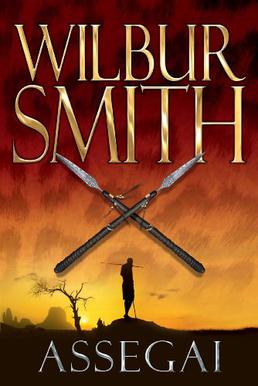
Assegai is Wilbur Smith's thirty-second novel, it follows The Triumph of the Sun in which the author brought the Courtney and Ballantyne series together. Assegai tells the story of Leon Courtney and is set in 1906 in Kenya. The events in the story are linked to and precede the outbreak of World War One.

River God is a novel by author Wilbur Smith. It tells the story of the talented eunuch slave named Taita, his life in Egypt, the flight of Taita along with the Egyptian populace from the Hyksos invasion, and their eventual return. The novel can be grouped together with Wilbur Smith's other books on Ancient Egypt. It was first published in 1993, and was adapted for television alongside The Seventh Scroll as the 1999 mini-series The Seventh Scroll.
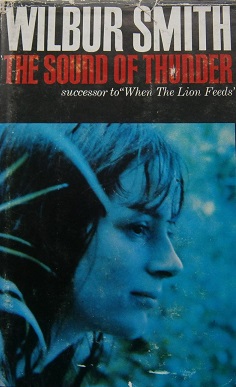
The Sound of Thunder is a novel by the Rhodesian writer Wilbur Smith. It is the second book in the Courtney Series and it is set several years after the first book, When the Lion Feeds, focusing around the Second Boer War.
The Courtney Novels are a series of twenty four novels published between 1964 and 2024 by Wilbur Smith. They chronicle the lives of the Courtney family, from the 1660s through until 1987.
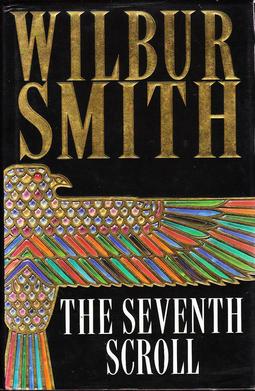
The Seventh Scroll is a novel by author Wilbur Smith, first published in 1995. It is part of the 'Egyptian' series of novels by Smith and follows the exploits of the adventurer Nicholas Quenton-Harper and Dr. Royan Al Simma. The tomb of Tanus, which is the focus of the book, refers to another novel by the author, River God.

Eagle in the Sky is a novel by Wilbur Smith, published in 1974.

The Last Lion is a 1972 South African action film directed by Elmo De Witt and starring Jack Hawkins, Karen Spies and Dawid Van Der Walt. The screenplay was written by Wilbur Smith, one of his rare original screenplays. He used a similar story later on in his novel A Time to Die.

A Sparrow Falls is a 1977 novel by Wilbur Smith. It is one of the Courtney Novels and is set during and after World War I.
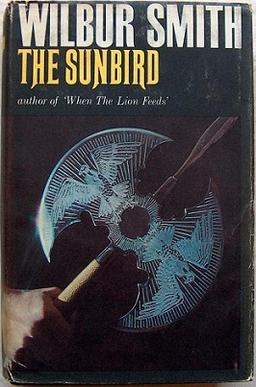
The Sunbird is a 1972 novel by Wilbur Smith about an archeological dig. The novel depicts a search for a Phoenician city in modern Botswana.
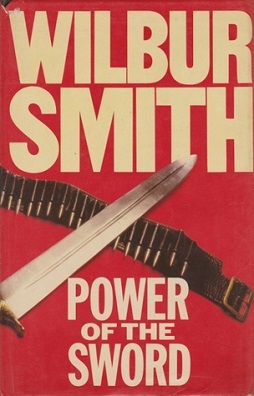
Power of the Sword (1986) is a novel by Wilbur Smith set before and during World War II.

Rage is a 1987 novel by Wilbur Smith set in the Union of South Africa, immediately following World War II. It starts in 1952 and goes until the late 1960s, touching on the country's declaration of a republic and the subsequent Sharpeville Massacre. The plot centers around Shasa Courtney and black resistance leader Moses Gama.

Golden Fox is a novel by Wilbur Smith, one of the Courtney Novels. It is set from 1969 to 1979 and touches on the South African Border War and the revolution in Ethiopia.

Birds of Prey is a 1997 novel by Wilbur Smith set in the late 17th century. The novel was the first in the third sequence of the Courtney series of novels, and as of 2013 was chronologically the first in the entire series.

The Triumph of the Sun is a novel by Wilbur Smith set during the Siege of Khartoum. Smith himself said the following about the novel:
"That incident had all the elements of a great story setting because you have the captive characters who are having to interact with each other because there is no escape – siege conditions. Also the river. I’m fascinated by the great rivers of Africa. Played against that was a sort of island setting in the desert. Then it had such powerful influences at work – the British Empire against the revolting Mahdists, the conflict of religions, Gordon and the Mahdi, both of them totally fanatical, believing that they spoke directly to God, and unbendable and unbending."



















